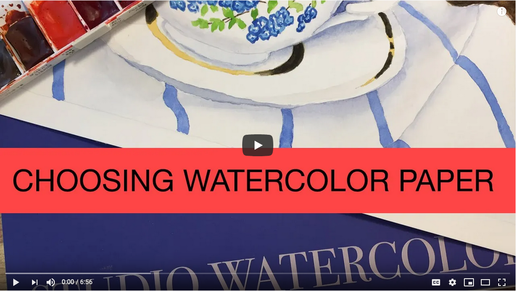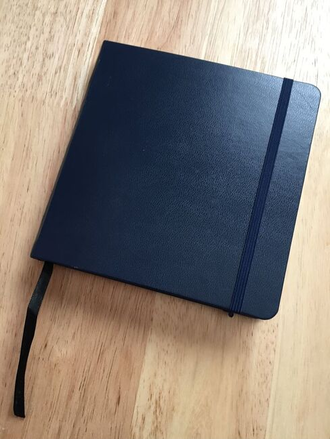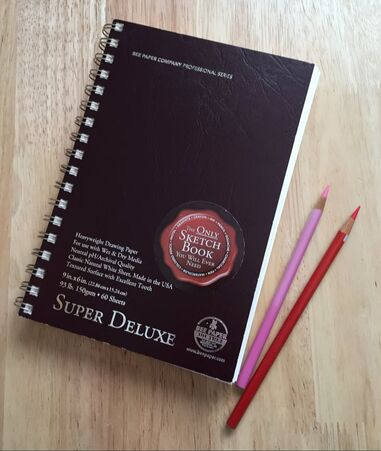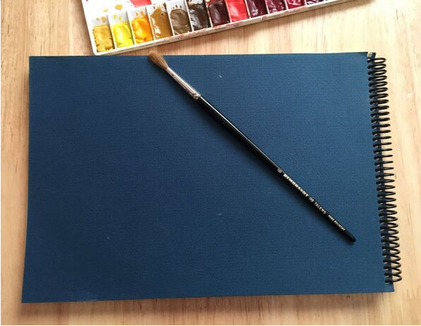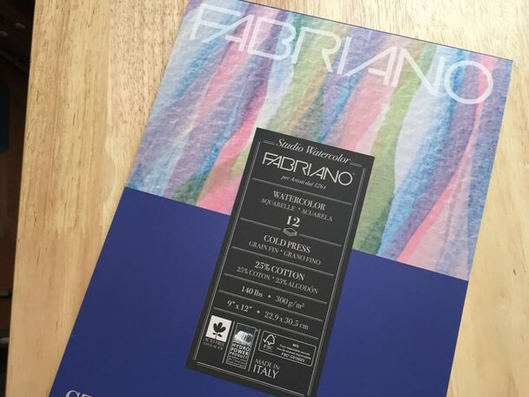Choosing Watercolor Paper - a Guide for Beginners
This is a general overview all about watercolor paper. For beginner painters, watercolorists, and sketchers, the topic of watercolor paper can be quite confusing because there are so many types, so many options, so many sizes, weights, finishes, and textures. If you're just starting out with watercolors, buy the best supplies you can, and proceed little by little.
I'm going to start from the smallest to the largest and show you some of the options you have from my own collection of papers and sketchbooks. But before that, I'm going to suggest you decide how big you want to paint. Is your goal to do large paintings for a living room wall, or to just have a sketchbook that you can take when you go for a walk?
I'm going to start from the smallest to the largest and show you some of the options you have from my own collection of papers and sketchbooks. But before that, I'm going to suggest you decide how big you want to paint. Is your goal to do large paintings for a living room wall, or to just have a sketchbook that you can take when you go for a walk?
|
The smallest watercolor book that I have has elastic binding around it. It has a small elastic loop, where you can carry a brush or a pencil, and has nice, firm paper with a bit of texture.
I bought this when I went on a trip recently, so that I could carry it in my luggage and it wouldn't take up a lot of space or be too heavy. I don't like to travel light, but I also don't like to have to carry too much, so a really small sketchbook works well. And I've used it while I was traveling and since I came home to record my trip. It is made by Moleskine. Another option is a Moleskine watercolor sketchbook in a rectangular shape, (below) which is similar in style and paper quality. It has the elastic to keep it together as well. The pages in both these books lay nice and flat, so you can paint something straight across the centre fold, such as with a landscape.
It is easy to pack in a bag, a tote, or a backpack. |
|
Another option that—this is something that I've done in the past—is buy a big watercolor sheet in the texture and the kind of paper I want, and then take it to a printer and have it cut down to the size I want, and have it bound (below).
This one is bound with one of those plastic coils. You can also have a book bound with a wire spiral. This one does lay nice and flat when I'm working on it, so that's not a problem, but it doesn't bend backwards very well. However, since I've chosen the paper myself, it has the texture that I want, and I can use it for all my small pieces. The advantage with creating your own watercolor sketchbook is that you get to choose the exact paper you want, and have it cut to the size that works for you. |
|
Another option is one like this one, below, which is a wire-bound. The nice thing about a wire-bound or a spiral-bound is that you can open them up flat and tuck the back behind. It's a heavyweight drawing paper for use with white or dry media, so you can use it for sketching or for watercolor. The one below is by Bee Paper and is 93 lb. weight, which is light for watercolor washes but fine for small watercolor sketches.
|
Here's another one I found at a bookstore, (below). It has a magnet closure, which is very handy for travel, and it's a water media sketchbook as well. It has nice, heavy paper.
You'll notice when you start looking at paper that there's quite a difference in texture, and with watercolor paper, you always have to be aware that, when water goes on paper, it makes it buckle. The heavier the paper, the less likely that is to happen. If you're using it for sketching when you're out and about or even in your home, and you don't want to deal with the buckling, get a nice heavy paper. This one also came with a nice natural bristle brush. |
Above right, is another option. I bought this at an art supply store, and it has a coil binding. Like some of the others, it will flip backwards, and it's also a nice paper. There's no buckling in this.
If you want to work a little larger, you can buy pads of paper. This one, below right, is made by Fabriano, and the company has been around since the year 1264, so they know what they're doing. And these are good if you're working to a size. I recently did some botanical florals for a client, and she wanted them about this size, so that she could have a nice display of four of them for her dining room. These kind of watercolor pads come in several sizes, such as 9"x12", or 11"x14". They also come in quite large sizes, so it's really worth deciding how you want to paint, what you want to paint. And as you go along, you'll discover more and more different options, different things that you want to do.
If you want to work a little larger, you can buy pads of paper. This one, below right, is made by Fabriano, and the company has been around since the year 1264, so they know what they're doing. And these are good if you're working to a size. I recently did some botanical florals for a client, and she wanted them about this size, so that she could have a nice display of four of them for her dining room. These kind of watercolor pads come in several sizes, such as 9"x12", or 11"x14". They also come in quite large sizes, so it's really worth deciding how you want to paint, what you want to paint. And as you go along, you'll discover more and more different options, different things that you want to do.
|
This particular paper is Cold Press, meaning the process results in a rougher surface, and is 25% cotton. It's 140 lb./300 gr. weight, which is a nice weight for most watercolor work.
If you want to paint large artworks you may want to use heavier paper, such as 300 lb. weight, as it will stand up to wet washes much better than lighter weight paper. Your final choice is using large, single sheets of watercolor paper. They usually measure 22x30 inches. When you're starting out, I recomment student-grade watercolor paper because you don't want anything to make you nervous about making mistakes. If you've spent a lot on your paper, you may be hesitant to "ruin it". It's smooth on one side, and has a rougher texture on the reverse. |
One of the reasons I choose these is, for one thing, watercolor paper can be quite expensive, and by buying student-grade for the kind of work that I do, I find that it's just fine.
And then, you can, like I mentioned before, take it and have it cut and made into a book if you'd like, if you've found the paper that you want. Or you can just cut it yourself and make smaller pieces. This is one I was just practicing with some colors and some wet on wet, which I will discuss in a different video, but you can see how the paper buckles, so there are ways to deal with that, and we'll talk about that later.
In the meantime, have fun shopping for watercolor paper. I'll put some links down below that you can follow to choose something that will work for you. And remember, subscribe, hit the bell, and make life pretty.
In the US: Watercolor Sketchbooks: https://amzn.to/2Tvs5AN
Watercolor Paper: https://amzn.to/2Z2jsig
In Canada: Watercolour Sketchbooks: https://amzn.to/2z4W2xT
Watercolour Paper: https://amzn.to/2yWGFYB
And then, you can, like I mentioned before, take it and have it cut and made into a book if you'd like, if you've found the paper that you want. Or you can just cut it yourself and make smaller pieces. This is one I was just practicing with some colors and some wet on wet, which I will discuss in a different video, but you can see how the paper buckles, so there are ways to deal with that, and we'll talk about that later.
In the meantime, have fun shopping for watercolor paper. I'll put some links down below that you can follow to choose something that will work for you. And remember, subscribe, hit the bell, and make life pretty.
In the US: Watercolor Sketchbooks: https://amzn.to/2Tvs5AN
Watercolor Paper: https://amzn.to/2Z2jsig
In Canada: Watercolour Sketchbooks: https://amzn.to/2z4W2xT
Watercolour Paper: https://amzn.to/2yWGFYB
|
|
